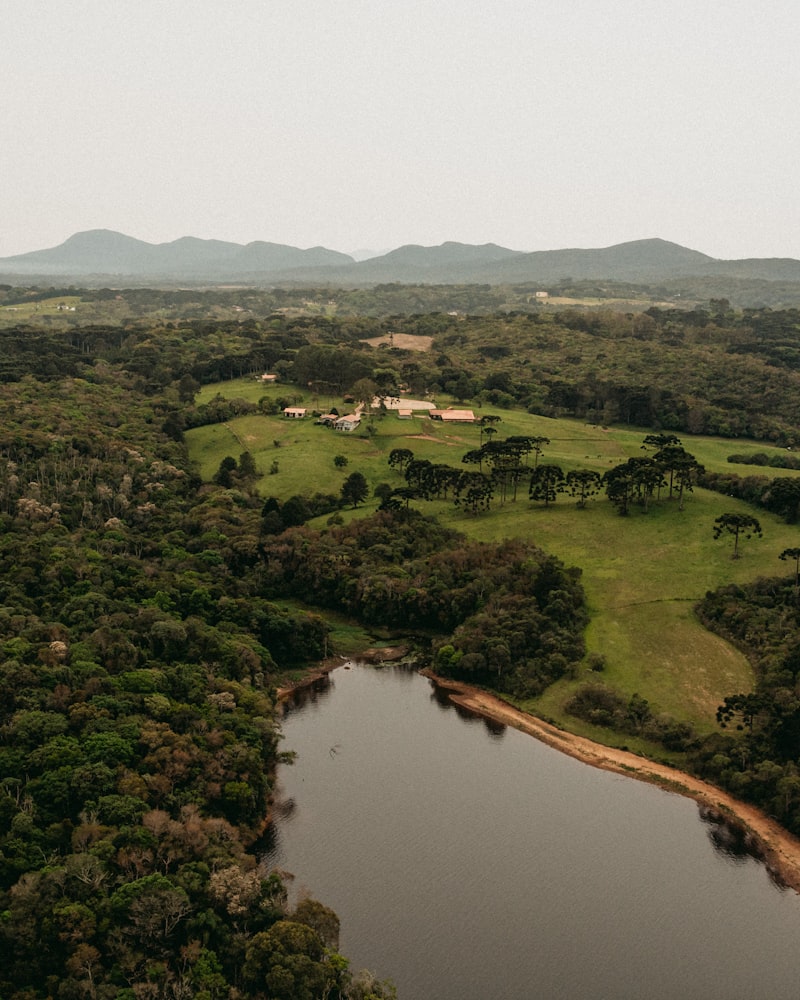The U.S. presidency stands as a beacon of democratic leadership, evolving significantly since its inception. From George Washington’s humble beginnings to the modern-day complexities faced by presidents like Joe Biden, the journey of the presidency has been one of continual transformation and adaptation.
Initially envisioned by the Founding Fathers as a limited executive role, the presidency has grown to become a central pillar of global politics. Over time, amendments to the Constitution, such as the Twelfth Amendment, reshaped the electoral process, ensuring smoother transitions of power and reflecting changing societal needs.
The expansion of presidential powers has been both a product and a response to historical events. From Abraham Lincoln’s handling of the Civil War to Franklin D. Roosevelt’s New Deal, crises have often necessitated broader executive action. These moments have redefined the presidency, elevating it from a mere administrative position to a platform for national leadership.
Technological advancements have also played a crucial role in shaping the presidency. The advent of radio allowed presidents like Franklin D. Roosevelt to communicate directly with the American public during times of crisis, fostering a more personal connection between leaders and citizens. In the modern era, social media platforms like Twitter have transformed how presidents communicate, offering instant, unfiltered access to their thoughts and policies.
Moreover, the demographics of presidents themselves have evolved. From the country’s early history dominated by white, male landowners, the presidency has gradually become more representative. Barack Obama’s election as the first African American president marked a significant milestone, highlighting the nation’s progress towards greater inclusivity and diversity in its highest office.
The evolution of the U.S. presidency reflects not only changes in governance but also shifts in societal norms and technological advancements. As the presidency continues to adapt to new challenges and opportunities, its role as a symbol of democratic leadership remains steadfast, continually reshaping itself to meet the needs of a changing world.
From Washington to Biden: Tracing the Evolution of Presidential Power
The evolution of presidential power in the United States from George Washington to Joe Biden showcases a dynamic journey shaped by historical events, constitutional interpretations, and shifting political landscapes. At the nation’s inception, George Washington set crucial precedents, establishing the authority of the executive branch while respecting legislative checks and balances. His leadership during the formative years laid the groundwork for the presidency’s evolving role as both a symbol of national unity and a seat of considerable influence.
As the country expanded and faced internal challenges, presidents like Abraham Lincoln and Franklin D. Roosevelt expanded executive authority in response to crises such as the Civil War and the Great Depression. Lincoln’s use of executive orders and war powers highlighted the president’s ability to act decisively in times of national emergency, setting a precedent for future leaders.
The modern presidency saw significant developments during the 20th century, with Theodore Roosevelt and Woodrow Wilson advocating for a more assertive executive role in domestic and foreign affairs. Their administrations marked a shift towards using presidential power to address social and economic issues, shaping the presidency into a more proactive institution.
In contemporary times, presidents like Ronald Reagan and Barack Obama navigated complex global challenges and domestic policy reforms, each leaving their mark on the presidency. Reagan’s conservative agenda emphasized limited government and economic deregulation, while Obama’s progressive policies focused on healthcare reform and environmental protection.

Under Joe Biden’s administration, the presidency continues to evolve amidst unprecedented challenges such as climate change, economic inequality, and global health crises. Biden’s emphasis on unity and bipartisanship contrasts with previous administrations, underscoring the enduring flexibility and adaptability of the presidential office in responding to the needs of a changing society.
Throughout history, from Washington’s cautious stewardship to Biden’s inclusive leadership style, the presidency has evolved as a reflection of America’s democratic ideals and its ability to meet the demands of an increasingly interconnected world. As the nation faces new challenges and opportunities, the role of the president remains pivotal in shaping the course of American history and the global stage.
How Technology Has Transformed the Modern Presidency
Have you ever wondered how technology has reshaped the way presidents govern in today’s world? From the days of telegraphs to the era of social media and artificial intelligence, technology’s impact on the modern presidency has been nothing short of revolutionary.
In the past, communication was limited to letters and face-to-face meetings. Imagine waiting days or even weeks for a message to reach its destination. Fast forward to today, where instant communication is the norm. Presidents can now connect with people across the globe in real time, whether through tweets that reach millions instantly or live-streamed addresses that bridge continents.
Moreover, the way information is gathered and processed has drastically evolved. Gone are the days of poring over stacks of papers; now, advanced data analytics sift through vast amounts of information to provide insights and predictions. This ability to harness big data allows presidents to make informed decisions swiftly, responding to crises with agility and precision.
Technology has also transformed how campaigns are run. Digital platforms enable candidates to reach voters directly, bypassing traditional media channels. Social media campaigns can mobilize supporters, crowdfund resources, and sway public opinion—all at the tap of a screen.
Beyond communication and campaigning, technology has enhanced security measures. Advanced encryption protects sensitive information, while surveillance technologies bolster national defense. Drones and satellites provide real-time intelligence, ensuring leaders are informed of developments around the globe.
In essence, technology has not only streamlined governance but also democratized access to information. Citizens now have unprecedented insight into the workings of government, holding leaders more accountable than ever before.

As we look to the future, one thing is certain: the ultimate impact of technology on the presidency will continue to evolve, shaping the way leaders govern and interact with their constituents. The journey from telegraphs to tweets may seem vast, but it’s just the beginning of what lies ahead in this ever-changing digital landscape.
The Role of Media in Shaping Presidential Communication Strategies
Ever wondered how presidents effectively communicate their agendas to the masses? The media plays a pivotal role in shaping these strategies, acting as a bridge between the highest office and the public eye.
Presidential communication strategies are not just about speeches and press releases; they are a carefully orchestrated dance with the media. Think of it as a tango where each move is calculated to convey the right message at the right time. The media amplifies presidential messages, making sure they reach every corner of the nation, from bustling cities to quiet towns.
In today’s digital age, the landscape has evolved. Social media platforms have become the new town square, where presidents can directly connect with millions in an instant. Twitter, Facebook, Instagram – these platforms offer a direct line from the Oval Office to the smartphone in your pocket. It’s a game-changer in how presidential communication is perceived and received.
But it’s not all about the tools; it’s about the strategy behind them. Presidents must navigate a complex media environment, where every word can spark headlines and every image can define a legacy. How they engage with journalists, how they utilize social media, and how they handle crises – these are all critical components of a successful communication strategy.
The media, therefore, acts as both a watchdog and a megaphone. It scrutinizes presidential actions, holding leaders accountable to the people they serve. Simultaneously, it broadcasts their achievements, ensuring that their messages resonate beyond the walls of Washington.
Understanding this symbiotic relationship between presidents and the media is crucial in comprehending modern governance. It’s a dynamic interplay where public perception is shaped by the narratives spun by journalists and presidents alike.
Changing Demographics: Diversity and Representation in the Oval Office

Historically, the Oval Office has been predominantly occupied by individuals from certain demographic groups, primarily white males. However, recent decades have seen a notable departure from this trend. The election of Barack Obama in 2008 marked a significant milestone as he became the first African American president, symbolizing a groundbreaking moment in American history.

Subsequently, Kamala Harris shattered another glass ceiling when she was inaugurated as the first female, Black, and South Asian vice president in 2021. Her ascension to such a prominent position underscores the increasing recognition of diversity in leadership roles within the highest echelons of government.
Beyond race and gender, diversity in the Oval Office extends to other aspects such as ethnicity, religion, and background. The inclusion of individuals from varied backgrounds brings unique perspectives to policymaking and governance, enriching the discourse and decision-making processes.
This shift towards diversity and representation in the Oval Office mirrors broader societal aspirations for inclusivity and equity. It reflects a growing acknowledgment of the strength derived from embracing different viewpoints and experiences in leadership positions.
As demographics continue to evolve, so too will the expectations and aspirations regarding representation in the Oval Office. The ongoing dialogue surrounding diversity ensures that the leadership of the United States reflects the diversity of its population, fostering a more inclusive democracy where all voices are heard and valued.
War and Peace: Presidential Authority in Foreign Policy Across Centuries

In ancient times, rulers like Alexander the Great exercised near-absolute control over military campaigns and diplomatic engagements. Their decisions often determined the fate of entire civilizations, highlighting the profound impact of individual leadership on global affairs. Fast forward to the Renaissance and early modern period, where monarchs such as Queen Elizabeth I of England navigated delicate alliances and conflicts to secure their realms’ interests.
The birth of modern nation-states marked a pivotal shift in presidential authority. In the United States, the Founding Fathers crafted a constitution that vested significant foreign policy powers in the presidency. Leaders like George Washington and Thomas Jefferson grappled with defining America’s role on the world stage, setting precedents for future administrations.
The 20th century witnessed unprecedented global upheavals, from two world wars to the Cold War. Presidents such as Franklin D. Roosevelt and Harry S. Truman reshaped international norms through bold initiatives like the Marshall Plan and NATO alliance, illustrating the expanding scope of executive authority in diplomacy and defense.
In contemporary times, the presidency remains a focal point of debate over foreign policy prerogatives. Leaders like Ronald Reagan and Barack Obama navigated complex geopolitical landscapes, balancing interventionist impulses with diplomatic overtures. The ability to command military forces and negotiate treaties underscores the enduring significance of presidential decision-making in shaping global stability.
As we look ahead, the evolving challenges of cybersecurity, climate change, and global pandemics pose new tests for presidential authority in foreign affairs. How leaders navigate these complexities will shape the future landscape of international relations, highlighting the enduring relevance of ‘War and Peace: Presidential Authority in Foreign Policy Across Centuries’.
Frequently Asked Questions
What are the main reforms and amendments that have impacted presidential powers and limitations over time?
Learn about the significant reforms and amendments that have shaped presidential powers and limitations throughout history. Understand the key changes that have influenced the scope and constraints of presidential authority over time.
What were the key historical events that shaped the modern presidency in the United States?
Explore the pivotal historical events that have significantly influenced the evolution of the modern presidency in the United States. From the establishment of the Constitution to landmark decisions and crises like the Civil War, these events have shaped the powers, responsibilities, and public perception of the presidency.
What are the major constitutional changes affecting the U.S. presidency since its inception?
Explore the significant constitutional changes that have shaped the U.S. presidency from its beginnings. Learn about pivotal amendments and reforms that have altered presidential powers, election procedures, and executive responsibilities over time.
How has the electoral process for selecting the U.S. president evolved throughout history?
Explore the evolution of the U.S. presidential electoral process over time. Discover how it has transformed from its early methods to the current system, highlighting key amendments and reforms that have shaped today’s electoral practices.
How has the role of the U.S. president evolved in relation to Congress and the judiciary?
Discover how the role of the U.S. president has transformed in its interaction with Congress and the judiciary over time.


